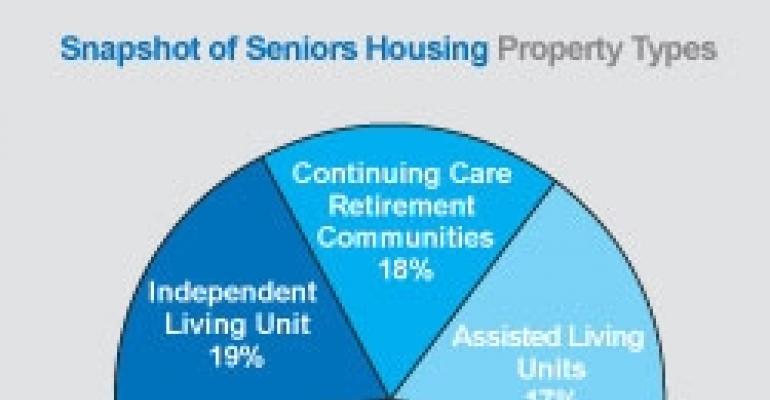
Investments in seniors housing may not be as risky as earlier perceived, according to a newly released study, which also shows financial returns in this specialized real estate sector on a par with more traditional property types. Sponsored by the Real Estate Research Institute (RERI), the study could spark an attitude change among institutional investors and generate new capital for the seniors housing industry.
"There's a real lack of knowledge about seniors housing among institutional investors," says Jeffrey Davis, president and CEO at Cambridge Realty Capital Cos. in Chicago. "There's a feeling out there that a continuing care community in an upscale suburb is more risky than an office building in Shanghai."
Davis conducted the study along with Elaine Worzala, professor and director of the Center of Real Estate Development at Clemson University, Clemson, S.C., and Judy Karofsky, president at Real Estate Insites, Madison, Wis. The researchers presented the study at RERI’s annual conference in April.
One goal of the research was to assign risk premiums to the various seniors housing products based on financial and regulatory characteristics as well as appraisals. The research found that age-restricted apartments are not that different risk-wise from apartment complexes. But risks rise as the setting becomes more service-oriented. In assisted living and nursing homes, for example, net cash flow becomes variable because of the services provided.
Independent and assisted living facilities, both at the lower end of the risk spectrum, have return expectations of about 8.20% and 8.50% respectively — above that of suburban office properties at 7.65%, the research shows. Expected returns from investments in continuing care facilities of about 8.80%, however, fall below the expected returns from extended stay lodging of 10.75%.
Skilled nursing facilities were found to have the highest expected returns, but also the highest level of risk. "We wouldn't discourage investment in nursing homes," notes Davis. "The risk-adjusted return is high enough that maybe it makes sense."
Davis acknowledges that data on financial returns for seniors housing is scant, and more information is critical for the sector to attract institutional capital. "Inconclusive data is holding back investors," he says.
The National Council of Real Estate Investment Fiduciaries (NCREIF) provides this information for other types of commercial real estate, but not for seniors housing. The National Investment Center for the Seniors Housing & Care Industry (NIC) supplies market information such as occupancies and rents, but does not track investment data such as rates of return.
"It is our hope and expectation that at some point in the future NCREIF will begin to provide return information for seniors housing and care,” says NIC president Robert Kramer.
Davis' research also surveyed members of the Pension Real Estate Association who were asked about their perceptions of seniors housing. A total of 46 respondents completed the written survey. Many of them did not hold seniors housing and were not looking to purchase property in this specialized real estate sector.
About 50% of the respondents did have some indirect investment in independent living and assisted-living buildings. "There is a lot of misinformation out there," says Davis. "Not every seniors housing building is a nursing home, and investors don't know how the product has changed."
The survey shows that a large majority (89%) of institutional investors did not want to hold any type of skilled nursing facility. And seniors housing alternatives were all rated as having high levels of risk and lower returns than, say, commercial real estate investments overseas or luxury hotels.
"There's a ton more risk if you invest overseas," says research co-author Worzala, who also studies foreign real estate investments. She notes that seniors housing in the United States has little political risk except for that associated with government subsidies for nursing homes. Overseas investments not only carry political risks, but also currency risks.
The way to minimize risk in seniors housing, Worzala adds, is to team up with a local partner who understands the market and how to operate the buildings. "You need a partner who knows how to provide services for seniors."

